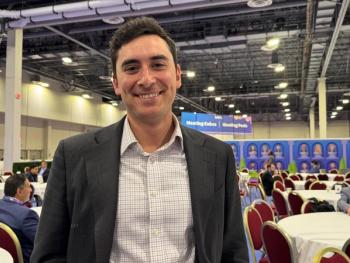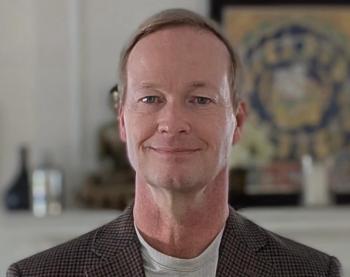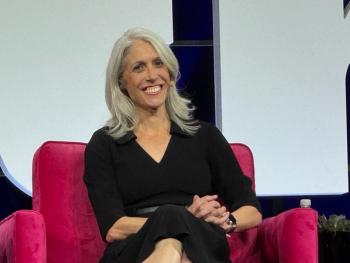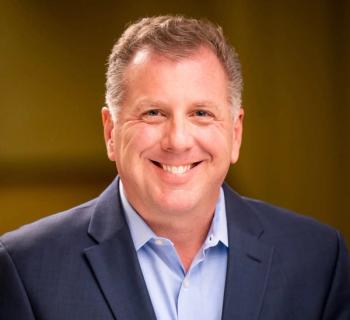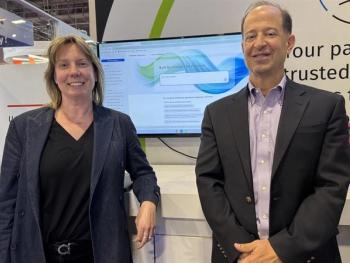
How Robotics Can Help Kids with Developmental Disabilities
Ad: Training with an AI robotic system translates to behavior change, innovator Ayanna Howard says.
Ayanna Howard, Ph.D., discusses pediatric robotics at HIMSS 2019.
Few people understand the intersection of artificial intelligence and robotics better than Ayanna Howard, Ph.D., chair of Georgia Tech’s College of Computing. She has authored more than 250 peer-reviewed publications, worked for institutions such NASA’s Jet Propulsion Laboratory, and launched her own educational tech company, Zyrobotics. But perhaps her most critical work has focused on how robotics and AI can help children with developmental disabilities undergo physiotherapy that fosters behavior change.
During a session at HIMSS 2019, Howard described the wide-ranging utility of intelligent pediatric robotic systems to serve children with conditions such as cerebral palsy and autism spectrum disorder. The tech that Howard developed and tested can lead therapy sessions, expanding access and even improving outcomes. And, critically, the mere presence of a robot gets children excited about treatment.
“I can bring in a robotic device, and I don’t have to convince them,” she said. “There’s not this apprehension of going to the doctor or the therapist.”
Improving Movement Through Pediatric Robotics
Composed of low-cost parts and plastic, Howard’s robots might not look like they belong in a science-fiction film. Rather, their ingenuity lies in their intelligence, which trains on the behavioral data of clinicians and children, in an ongoing process. When prepared, the AI enables interactions that are similar to those between patient and physiotherapist.
“These robots aren’t emotional, but they simulate and execute emotions pretty well,” Howard said.
This is significant because in conducting the therapy session, robots must exchange language and read and deliver cues, such as the drop of a child’s shoulders, to keep the patient engaged.
When that happens, the intelligent systems can do their job. The robots leverage gamification to prod children with cerebral palsy and autism to perform physical exercises that are designed to improve their movement or motor skills. Using sensors and cameras, the systems assess each patient’s growth, providing constructive feedback and encouragement.
The hope is, after enough repetition, patient movement will improve — even when the robot therapist is nowhere to be found.
Pediatric Robotics, Therapy & Outcomes
Howard has spent a great deal of time validating outcomes, quantifying movements, and comparing data to various baselines. It is all about determining whether her efforts are creating a mere game or a technology of medical value. So far, the results are promising.
In an eight-week study, Howard compared changes in typically developing children and those with cerebral palsy while interacting with the system. At the outset, participants in the two groups moved differently, but in just four weeks, kids with cerebral palsy matched many of the other group’s movement parameters. After eight weeks, the data revealed no difference.
“What that meant was, as the child was moving, they moved in a similar fashion as typically developing kids,” Howard said. “Training with a robot translates to human behavior.”
Going forward, the innovator must figure out how to design for sustained growth after the removal of the robotic system. It will be a data-intensive challenge, but if Howard succeeds, she could change the lives of countless kids with developmental disabilities.
Robotics & Healthcare Innovation
Prior to the discussion on pediatric robotics, Don Woodlock, head of the HealthShare Business Unit at InterSystems, told a story of two bricklayers. When asked about the scope of their work, one of the laborers claimed they were simply laying bricks. The other said they were building a temple.
The second response is also true across health IT, from interoperability and AI to cybersecurity and pediatric robotics. Howard and her visionary peers do not work for the sake of it. They innovate for patients — disabilities, chronic conditions, traumatic injuries, and so on — because, at some point, everyone can benefit from better technology.
“We’re all here for something bigger and better,” Woodlock said, “which is the health and care of patients everywhere.”
Learn more about how
More on Healthcare Innovation

